Abstract
AIMS: To investigate the effects of slide storage on immunohistochemical staining, since recent reports have indicated that storage of unstained paraffin slides for up to 12 weeks may lead to false negative immunostaining of tumour markers. METHODS: 11 antibodies (anti-cytokeratin, epithelial membrane antigen (EMA), vimentin, smooth muscle actin, PS100, chromogranin, CD45, CD20, CD3, CD30, and oestrogen receptor (OR) were tested on unstained paraffin slides of breast carcinomas, lymphomas, and neuroendocrine tumours that had been stored for three to 10 years. All the paraffin blocks were recut less than one week before immunostaining. Immunostainings of years old slides were compared with those of recent slides in at least five cases for each antibody. For three antibodies (antichromogranin, anti-CD3, and anti-OR) we also tested one year old and three months old slides. RESULTS: Intensity of staining on years old slides was strikingly reduced for chromogranin and CD3 in several cases and was slightly stronger for vimentin. In some cases a significant decrease of OR positivity was observed after three months storage, and a complete loss of OR immunostaining after 12 months. No significant difference was noted with the other antibodies. CONCLUSIONS: Immunohistochemical detection of some antigens located either in the nucleus, in the cytoplasm, or on the cytoplasmic membrane could be impaired by storage of paraffin slides as short a time as three months. One should be cautious of doing retrospective immunohistochemical studies on stored unstained slides.
Full text
PDF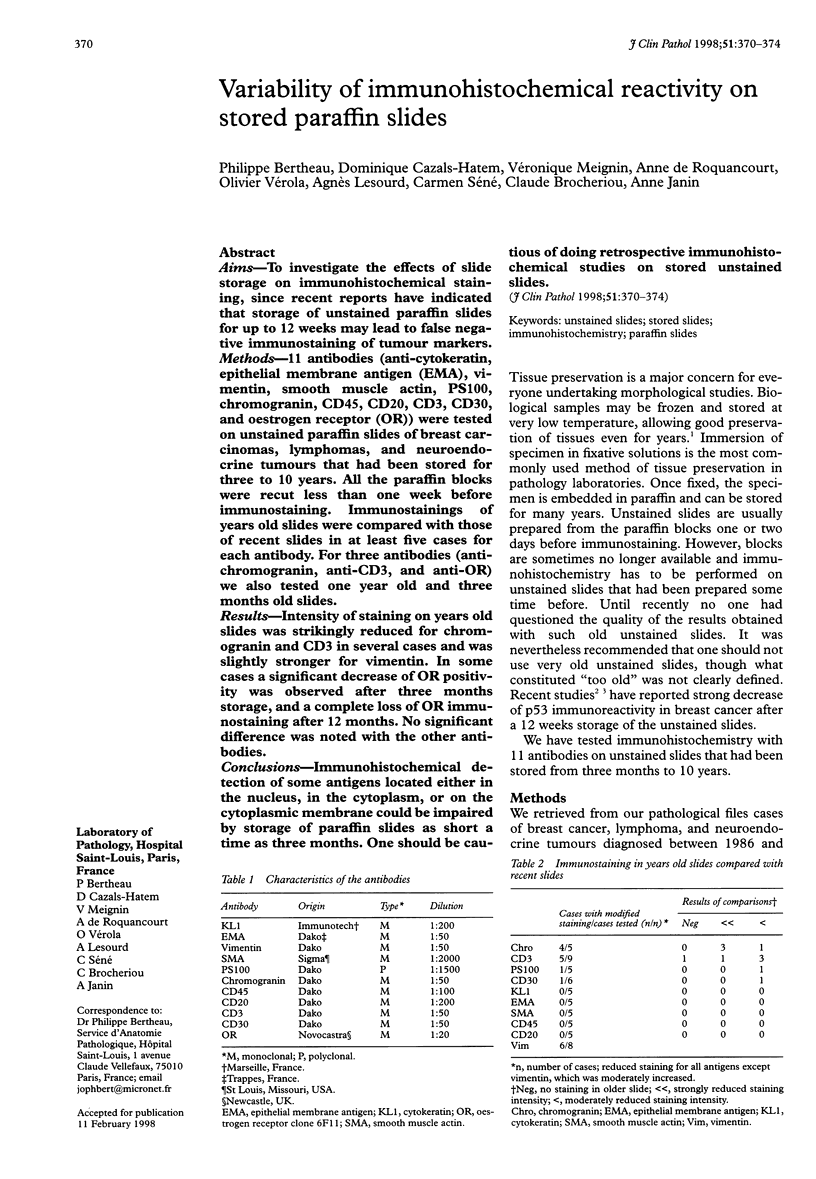
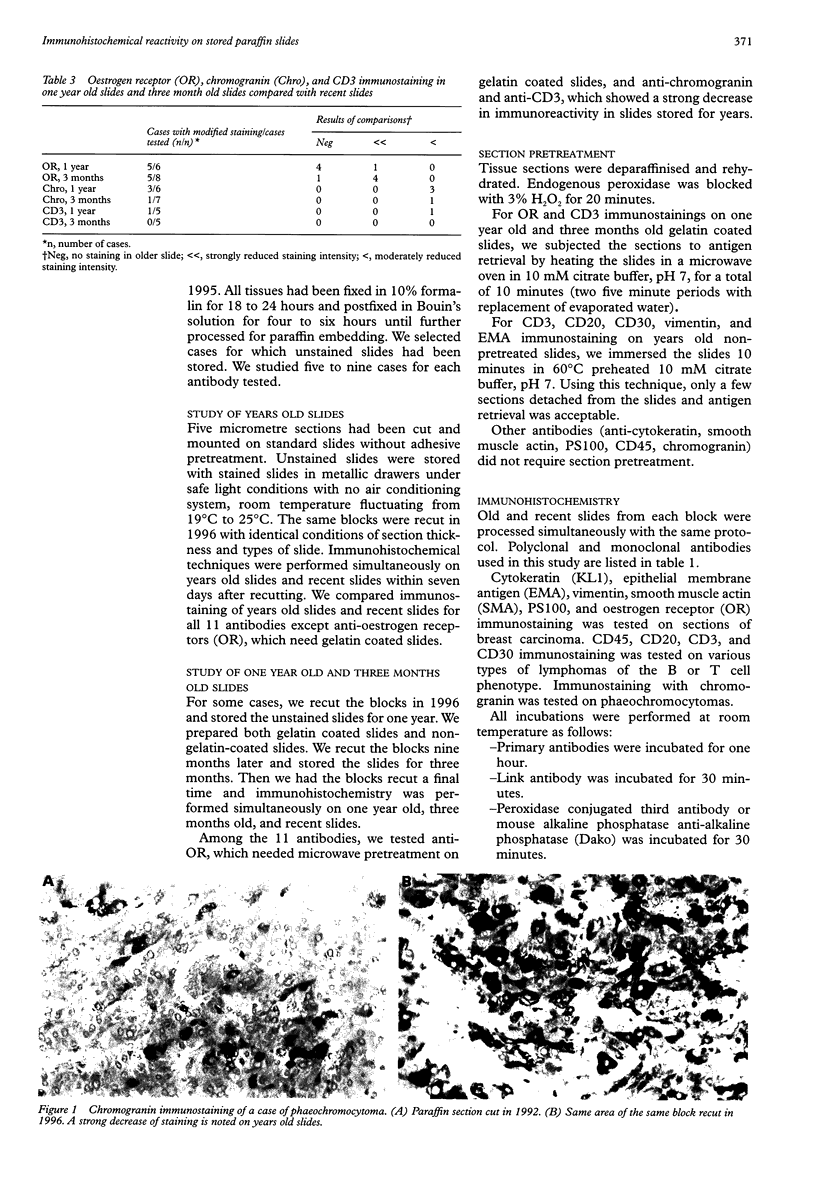
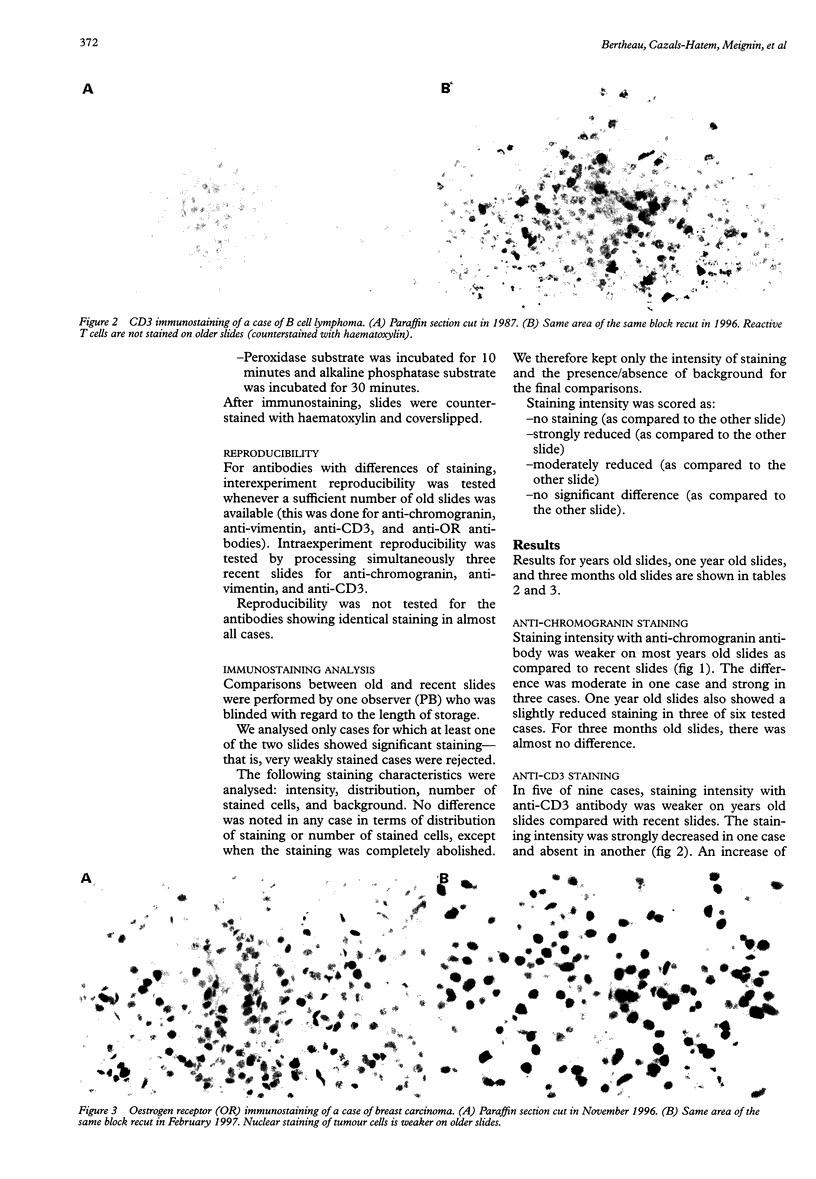
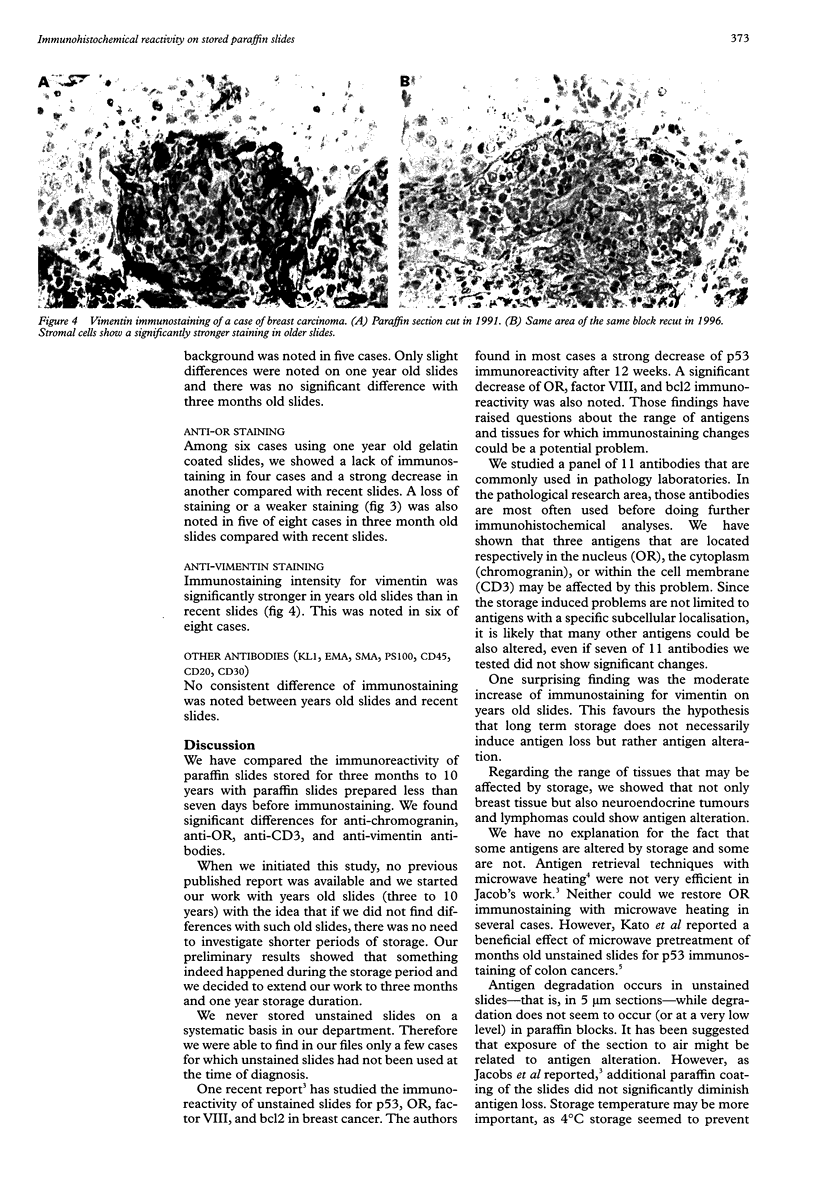
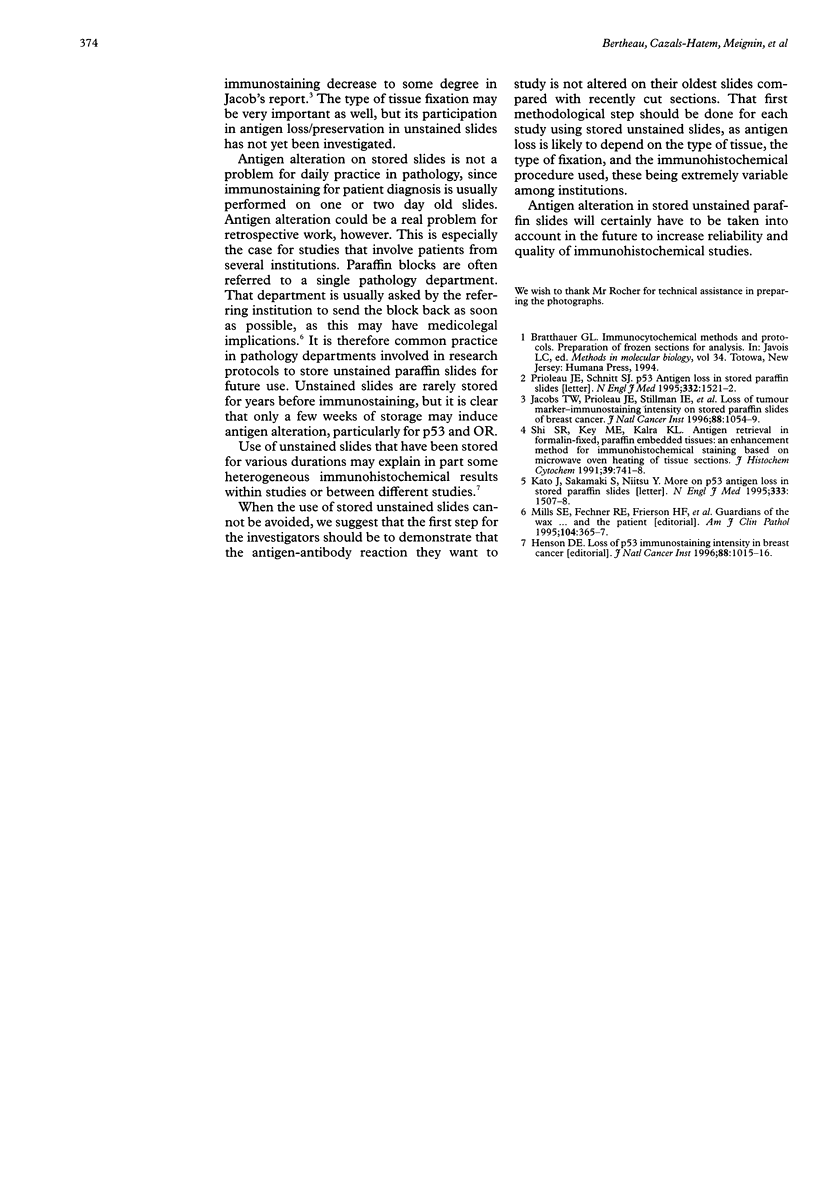
Images in this article
Selected References
These references are in PubMed. This may not be the complete list of references from this article.
- Henson D. E. Loss of p53-immunostaining intensity in breast cancer. J Natl Cancer Inst. 1996 Aug 7;88(15):1015–1016. doi: 10.1093/jnci/88.15.1015. [DOI] [PubMed] [Google Scholar]
- Jacobs T. W., Prioleau J. E., Stillman I. E., Schnitt S. J. Loss of tumor marker-immunostaining intensity on stored paraffin slides of breast cancer. J Natl Cancer Inst. 1996 Aug 7;88(15):1054–1059. doi: 10.1093/jnci/88.15.1054. [DOI] [PubMed] [Google Scholar]
- Kato J., Sakamaki S., Niitsu Y. More on p53 antigen loss in stored paraffin slides. N Engl J Med. 1995 Nov 30;333(22):1507–1508. doi: 10.1056/NEJM199511303332217. [DOI] [PubMed] [Google Scholar]
- Mills S. E., Fechner R. E., Frierson H. F., Kempson R. L., Wick M. R., Dehner L. P., Swanson P. E., Humphrey P. A. Guardians of the wax ... and the patient. Am J Clin Pathol. 1995 Oct;104(4):365–367. doi: 10.1093/ajcp/104.4.365. [DOI] [PubMed] [Google Scholar]
- Prioleau J., Schnitt S. J. p53 antigen loss in stored paraffin slides. N Engl J Med. 1995 Jun 1;332(22):1521–1522. doi: 10.1056/NEJM199506013322217. [DOI] [PubMed] [Google Scholar]
- Shi S. R., Key M. E., Kalra K. L. Antigen retrieval in formalin-fixed, paraffin-embedded tissues: an enhancement method for immunohistochemical staining based on microwave oven heating of tissue sections. J Histochem Cytochem. 1991 Jun;39(6):741–748. doi: 10.1177/39.6.1709656. [DOI] [PubMed] [Google Scholar]






